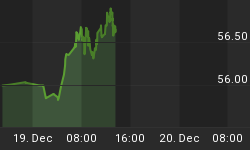The US economy and much of the global economy continues to be in a post-bubble, debt deleveraging process. M3, the broadest measure of money supply, demonstrates that deleveraging has re-emerged as a key threat to economic growth. As measured by Shadow Statistics, M3 declined 5.9% this year versus last year for the month of May - the worst contraction since 1934 during the Great Depression. Despite the ominous trend in M3, many investors are holding risk assets, such as stocks and bonds, with the false hope of a self-sustaining economic recovery and/or the assumption that the Federal Reserve will bail them out (via quantitative easing) should equity markets fall.
The investment mantra "Don't Fight The Fed" was echoed loudly on Wall Street from August 2007 through February 2009. This was bad advice even though the Federal Reserve continually cut interest rates and launched numerous special lending facilities. Not surprisingly, faith in the Federal Reserve has since returned because of the 80% rally in the S&P 500 from March 2009 through April 2010, which coincided with the start of the Federal Reserve's quantitative easing program. However, quantitative easing may not have produced the massive rally in risk assets, but rather the rally resulted from severely oversold market conditions, much like the rally from November 1929 through April 1930.
Regardless of what generated the rally in risk assets, investors should not be comforted by the Federal Reserve's ability to reinitiate quantitative easing. For one, if the Federal Reserve has to increase its asset purchases, the stock market and the economy will have already retreated meaningfully. Secondly, Figure 1 shows that even with significant asset purchases by the Bank of Japan from 1997 (earliest data available) through 2006 the Nikkei 225 index failed to respond (Figure 2). Japanese stocks instead followed the path of the global economy and global stock markets. Investors should note that the Japanese stock market is now 50% lower than it was in 1997 despite a more than doubling of the Bank of Japan's balance sheet.
Figure 1. Bank Of Japan's Assets (billions of yen; July 1997 - June 2010)
Sources: Bank of Japan, Continental Capital Advisors
Figure 2. Nikkei 225 (July 1997-June 2010)
Sources: Yahoo! Finance, Continental Capital Advisors
Figure 3. S&P 500 (July 1997-June 2010)
Sources: Yahoo! Finance, Continental Capital Advisors
The only discernable difference between the performance of the Nikkei 225 and the S&P 500 is the period from 1997 through 1999 when the Japanese stock market fell while the S&P 500 rose. Despite significant quantitative easing by the Bank of Japan, the stock market was unable to overcome the negative forces of high equity valuations, economic weakness and deflation. This historical example of ineffective quantitative easing is being ignored by investors in US assets. Furthermore, the current deleveraging process is global in scope and impacts both the private and public sector. As a result, investing in risk assets on the basis that the Federal Reserve will print money is likely to be even more costly than it has been for investors buying Japanese equities.















